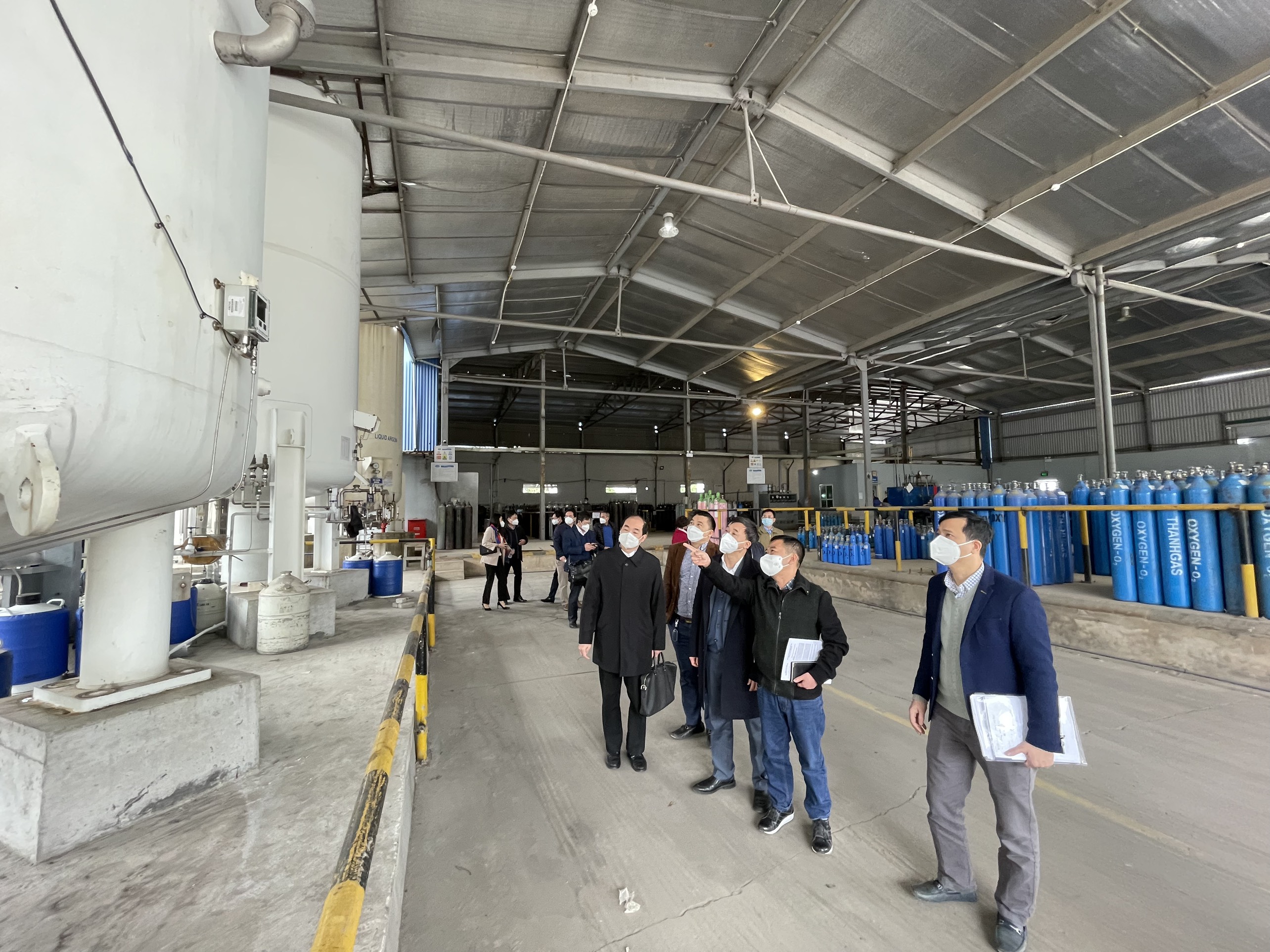Author Archives: Thanh Gas
- 10
Jun 25
0
- 16
Apr 25
0
- 15
May 23
0
- 23
Feb 22
0

Thứ trưởng Bộ y tế – Trần Văn Thuấn kiểm tra việc cung ứng oxy y tế phục vụ công tác phòng chống dịch Covid trên đia bàn TP.Hà Nôi
10h ngày 23/2/2022; Thứ trưởng Bộ y tế Trần Văn Thuấn cùng các lãnh đạo vụ trang thiết bị y tế và công trình y tế, lãnh đạo sở y tế Hà Nội đến thăm nhà máy Công ty CP Khí công nghiệp Việt Nam (Thanhgas) tại đường TS09 – KCN Tiên Sơn – Tiên Du – Bắc Ninh.
Đoàn làm việc kiểm tra khu vực nạp khí tại Thanhgas
Đoàn làm việc kiểm tra xưởng sản xuất thiết bị tại Thanhgas
Tại buổi làm việc với đơn vị, bộ y tế đã kiểm tra thực tế trang thiết bị và năng lực cung ứng, sản xuất của công ty.
Thứ trưởng Trần Văn Thuấn đánh giá cao khả năng cung ứng, năng lực sản xuất của công ty đảm bảo cho bệnh viện tại Hà Nội và khu vực phía Bắc.
Với cơ sở vật chất, trang thiết bị hiện có – Công ty cổ phần khí công nghiệp Việt Nam tự hào là đơn vị đầu đàn trong lĩnh vực khí y tế tại khu vực.
- 10
Feb 21
0

Join hands to prevent Covid-19

We at Vietnam Industrial Gas JSC are proud to join hands with the government and make our best efforts to fight against Covid-19 pandemic. We hope every white-shirted soldiers who is currently at the frontline will always stay healthy, every patients will soon recover and all Vietnamese people will unite and strictly follow government’s instructions so we can enjoy New Year 2021 in the joy of victory. We can do it, you can do it and together we can defeat the Covid-19 as we did twice in 2020.
Best wishes for Vietnam!
QUALITY - SAFETY - EFFICIENCY - COMPETITIVE










 Views Today : 557
Views Today : 557 Total views : 451099
Total views : 451099 Who's Online : 1
Who's Online : 1